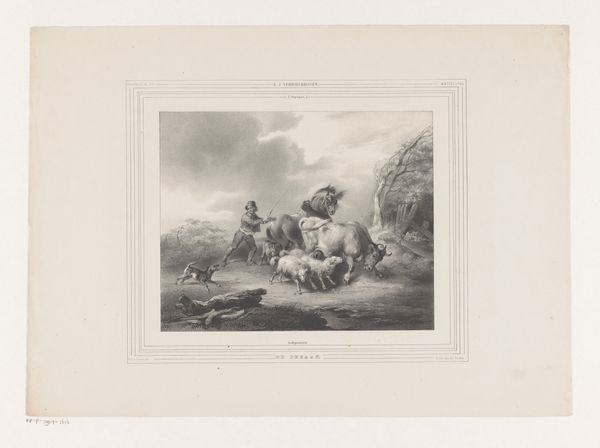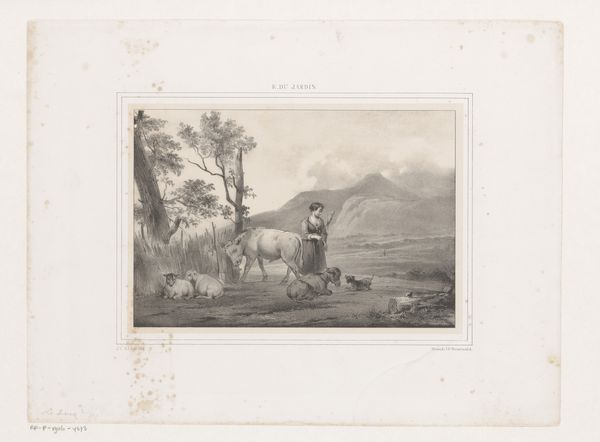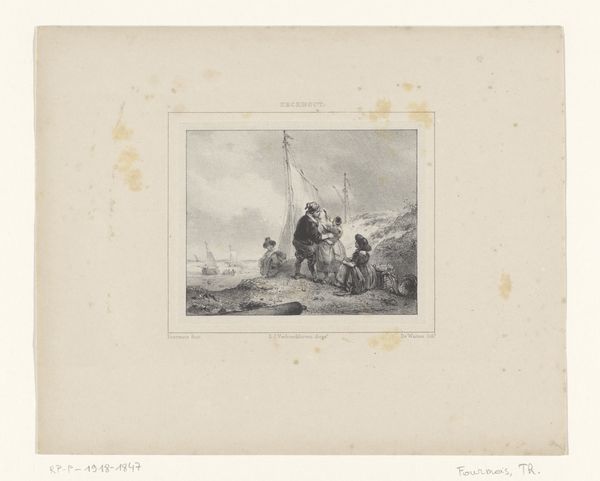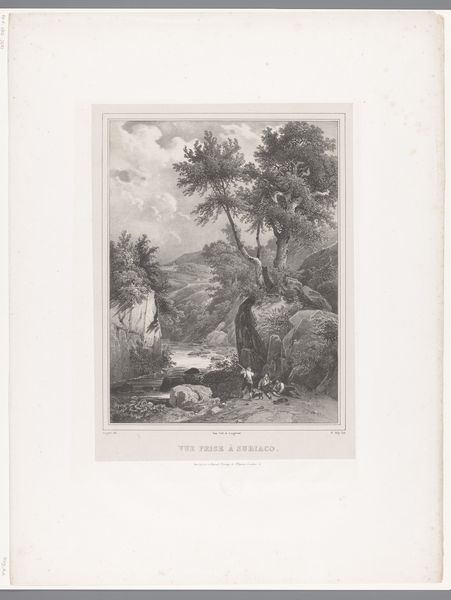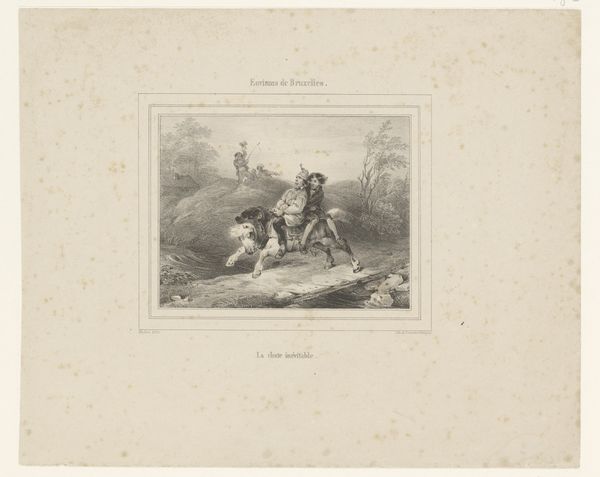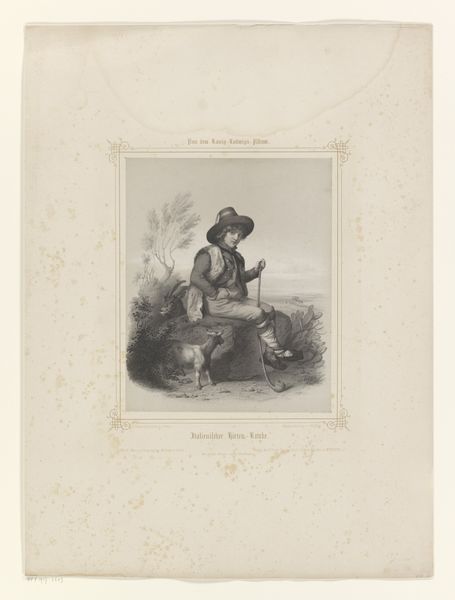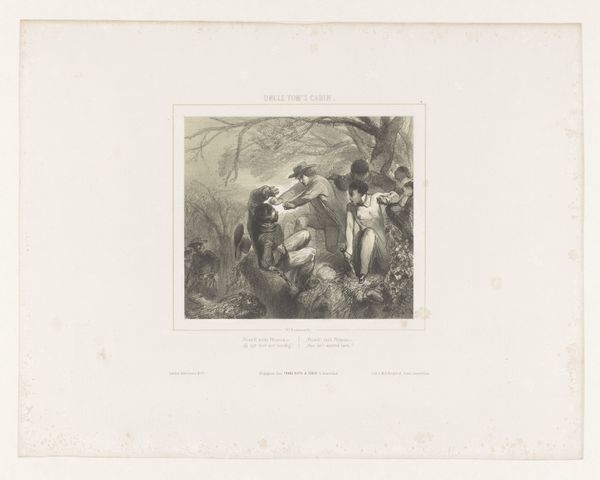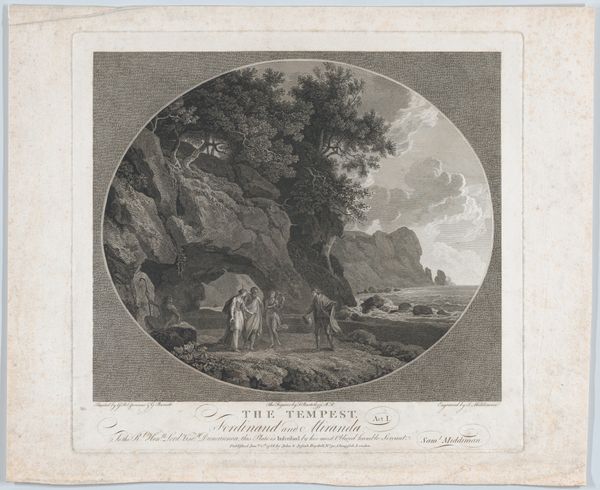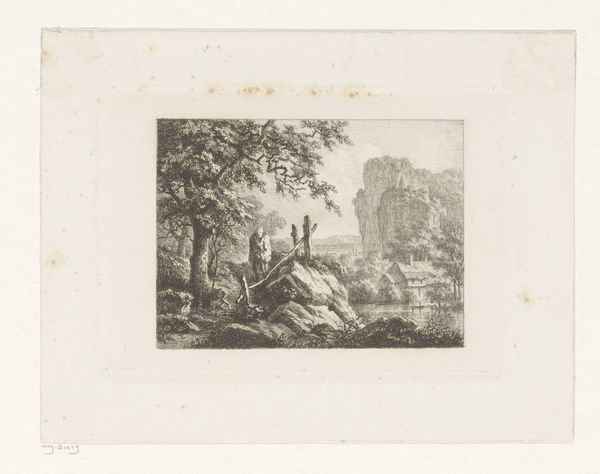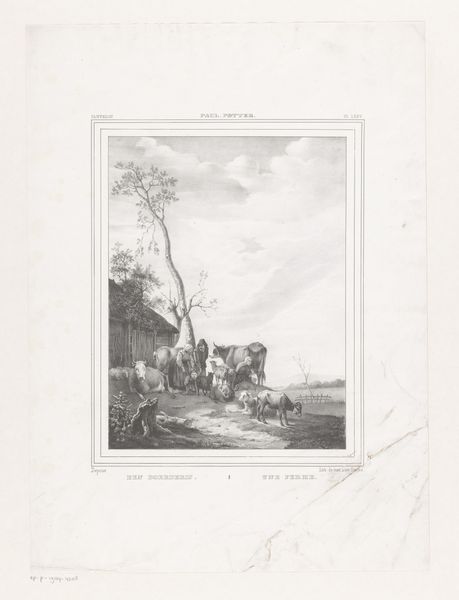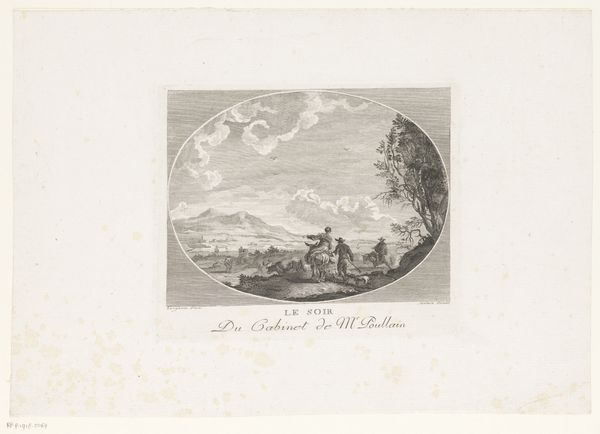
Dimensions: height 440 mm, width 592 mm
Copyright: Rijks Museum: Open Domain
Curator: Johann Wölfle's "Man by a Fallen Hay Wagon in a Landscape," likely from the 1850s, captures a moment of apparent rural setback through the techniques of etching, drawing, and graphite on paper. Editor: My first thought? It’s heavy. The mass of the hay wagon and the weighty sky above really push down on that solitary figure. There’s a stillness and sense of waiting. Curator: Precisely, that stillness resonates when considering broader agricultural narratives. The accident potentially disrupts labor, bringing questions around agrarian hardship into sharp focus, especially in the mid-19th century, a period rife with anxieties concerning industrial encroachment and rural labor. Editor: I'm drawn to how the material – paper, graphite, and the etching process – contributes to this sense of weight. The textured shadows created by the etching build up the volume of the hay and even the clouds, making the toil palpable. We see evidence of labor at multiple stages. Curator: It also invites discussion about the representation of masculinity within such labor contexts. Consider the social roles thrust upon rural workers and what implications arise from unexpected delays in expected output and income. Editor: Absolutely. The horses standing nearby highlight animal labor, a power relationship often ignored. We see a dependency and disruption simultaneously: the wagon’s breakdown is theirs too, underlining their role within an economic ecosystem. Curator: The placement of the lone man in relation to the downed hay wagon invokes a feeling of powerless isolation. Does he consider an alternative future given his current predicament? Editor: The landscape seems both indifferent and implicitly part of this dynamic, doesn't it? Its passive participation in the economic cycle reinforces that connection of resources to markets. Curator: Indeed, reflecting on this scene urges one to rethink historical romanticism by weaving contemporary issues. How, even in stillness, the gears of material struggle still continue to shape the social dynamic. Editor: Seeing the artist's use of etching in combination with other materials brings the labor required for its creation into view. The act of observation can transform one's perceptions regarding materials, labor, and context.
Comments
No comments
Be the first to comment and join the conversation on the ultimate creative platform.
